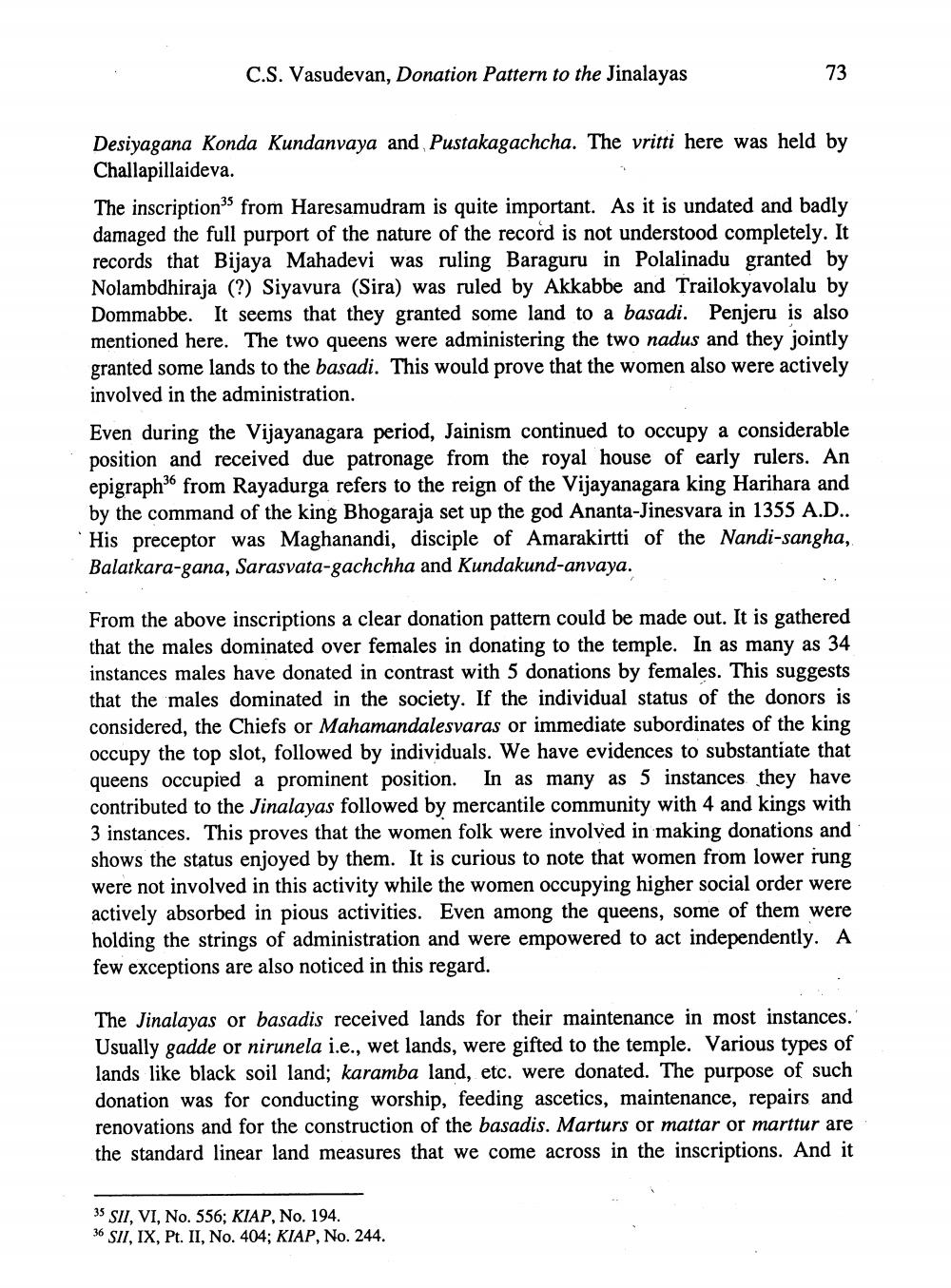________________
C.S. Vasudevan, Donation Pattern to the Jinalayas
Desiyagana Konda Kundanvaya and Pustakagachcha. The vritti here was held by Challapillaideva. The inscriptionfrom Haresamudram is quite important. As it is undated and badly damaged the full purport of the nature of the record is not understood completely. It records that Bijaya Mahadevi was ruling Baraguru in Polalinadu granted by Nolambdhiraja (?) Siyavura (Sira) was ruled by Akkabbe and Trailokyavolalu by Dommabbe. It seems that they granted some land to a basadi. Penjeru is also mentioned here. The two queens were administering the two nadus and they jointly granted some lands to the basadi. This would prove that the women also were actively involved in the administration. Even during the Vijayanagara period, Jainism continued to occupy a considerable position and received due patronage from the royal house of early rulers. An epigraph from Rayadurga refers to the reign of the Vijayanagara king Harihara and by the command of the king Bhogaraja set up the god Ananta-Jinesvara in 1355 A.D.. His preceptor was Maghanandi, disciple of Amarakirtti of the Nandi-sangha, Balatkara-gana, Sarasvata-gachchha and Kundakund-anvaya.
From the above inscriptions a clear donation pattern could be made out. It is gathered that the males dominated over females in donating to the temple. In as many as 34 instances males have donated in contrast with 5 donations by females. This suggests that the males dominated in the society. If the individual status of the donors is considered, the Chiefs or Mahamandalesvaras or immediate subordinates of the king occupy the top slot, followed by individuals. We have evidences to substantiate that queens occupied a prominent position. In as many as 5 instances they have contributed to the Jinalayas followed by mercantile community with 4 and kings with 3 instances. This proves that the women folk were involved in making donations and shows the status enjoyed by them. It is curious to note that women from lower rung were not involved in this activity while the women occupying higher social order were actively absorbed in pious activities. Even among the queens, some of them were holding the strings of administration and were empowered to act independently. A few exceptions are also noticed in this regard.
The Jinalayas or basadis received lands for their maintenance in most instances. Usually gadde or nirunela i.e., wet lands, were gifted to the temple. Various types of lands like black soil land; karamba land, etc. were donated. The purpose of such donation was for conducting worship, feeding ascetics, maintenance, repairs and renovations and for the construction of the basadis. Marturs or mattar or marttur are the standard linear land measures that we come across in the inscriptions. And it
35 SII, VI, No. 556; KIAP, No. 194. 36 SII, IX, Pt. II, No. 404; KIAP, No. 244.




